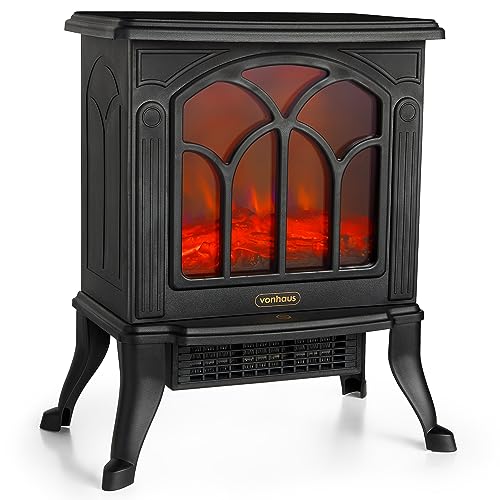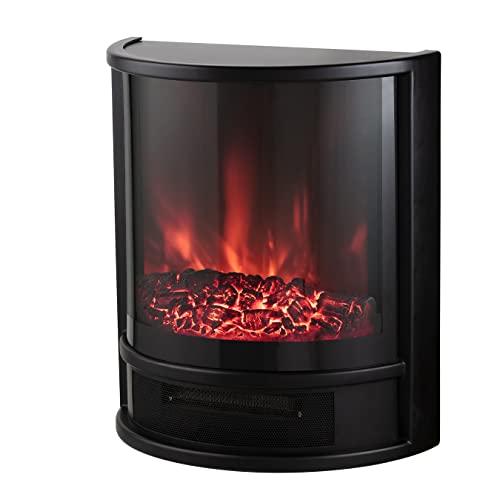Why You Should Focus On Making Improvements To Wood Burner Fireplace
페이지 정보

본문
 How to Get the Most From a Wood Burner Fireplace
How to Get the Most From a Wood Burner FireplaceUnlike traditional open fireplaces wood stoves are engineered and designed to burn firewood. This allows them meet tighter emissions regulations.
Wood burning stoves offer warm, yellow flames that dance, crackling sounds, and that primordial sensation of warmth. However, the smoke it creates is contaminated with carbon monoxide as well as toxic air pollutants like benzene, formaldehyde and polycyclic aromatic hydrocarbons.
Efficient
Fireplaces and stoves made of wood provide a beautiful and natural heat to your home, they are also incredibly efficient. A high-quality wood burner can achieve an Ecodesign rating as high as 77%. With the rising cost of energy, it is important to ensure that you get the most benefit from your log burner - the good news is that it's more simple than ever!
The amount of moisture in firewood is an important factor that determines the efficiency of a wood-burning stove is. We recommend using only well-seasoned wood that has been dried over a period of at least one year and in many cases two years. The more dry the wood more dry, the better it burns. This results in less smoke, and less harmful emissions.
A wood burning stove also offers the advantage of being an eco-friendly fuel source which is good for the environment. In addition, by buying locally sourced firewood you are aiding in the active management of woodlands which is a good aspect for wildlife.
As far as maintenance is concerned, the only requirement of a wood burner is to regularly take out and dispose of the ash. It's a bit of a hassle but it's worth it to get the most heat from each log. Additionally that if you wait a couple of days until the ashes completely cool they can be used as a non-toxic and eco-friendly ice melt. They can be used to polish jewelry and electric fires also absorb the odors.
A wood burner fireplace is a timeless classic. Although they are less popular than gas fireplaces wooden (http://182.92.163.198:3000/Fireplacesandstove3986/7056408/wiki/20-Trailblazers-Lead-The-Way-In-Fireplace), their appeal and ambiance of a fire that is roaring can't be disregarded. These fires are great to snuggle up with on cold nights, and they make a warm and inviting space within your home. Make sure you invest in a high-quality wood burner and you'll be reaping the benefits for many years to come! Our expert chimney sweeps are on hand to help you get the most out of your stove. Give us a call now to find out more.
Low Carbon
Wood burners that burn clean and efficiently are one of the best ways to save the cost of logs while keeping your home warm. In addition, they can also assist in local woodland management, a fantastic way to support the wildlife that lives in your area.
When properly maintained wood-burning stoves and fireplaces emit little or no pollution when they are operated with dry and seasoned wood. When they are not properly maintained or when they use wood of poor quality the smoke produced contains fine particles, commonly referred to as particulate pollution that can cause irritation to the lungs and other organs of the body. It also contains carbon monoxide as well as toxic air pollutants such as benzene, formaldehyde and polycyclic aromatic hydrocarbons. Inhaling air pollution can cause irritation of the lung and trigger asthma attacks, wheezing, coughing and lung irritation. It may also cause heart disease, cancer or premature death.
Some people are concerned that wood-burning stoves can contribute to climate changes, but this isn't necessarily true. The combustion of wood produces energy that is carbon neutral. Throughout the lifetime of a tree it absorbs carbon dioxide and when burned the absorbed carbon is released back into the atmosphere.
Since the wood is sourced locally this decreases the amount of pollutants released in the process of transportation. It is also essential to use high quality, seasoned hardwoods as these will provide an extended and more consistent burn than softwoods.
Modern, EPA certified wood stoves and heaters (such as those made by Charlton & Jenrick) have much lower emissions than older stoves. They have been certified to meet 2020 EPA standards, which are considerably more stringent than the previous emission limits.
All wood-burning stoves must be fully vented to the outside of your home to ensure they do not cause a build-up of exhaust inside your home. By keeping the flames away from the logs and ensuring that you use dry, seasoned wood, all of our current clean burn and DEFRA exempt stoves produce very clear exhaust and have particulate levels 60% or more below the DEFRA limit.
A wood burning stove with an acatalytic converter or hybrid unit can provide the best low-carbon heating solution. These units re-ignite the particulates and gases from the initial combustion at a later stage by mixing them with superheated air. They then funnel the remaining gases and particulates through a catalytic combustor for an additional and final combustion, decreasing emissions to levels well below government standards.
Clean Burn
Cleanburn wood stoves burn fuel at the highest possible efficiency. This results in minimal dust emissions into the atmosphere when burning wood. The stove's air management system controls the intake and exhausting of gases, ensuring that the combustion process is conducted in a controlled, sealed environment. It also regulates flame height to maximize heat output and minimise emissions.
This means your chimney and the surrounding area will be much cleaner than older stoves. Particulate matter, also referred to as particle pollution, is a result of incompletely burned wood can trigger respiratory issues, such as wheezing and coughing, and contribute to heart disease, stroke, diabetes, and other serious ailments. The air pollution resulting caused by wood burning is an important factor in poor urban air quality.
The smoke that is emitted from poorly combusted wood is a mixture of fine particulate matter and dangerous air pollutants, including carbon monoxide volatile organic compounds, nitrogen oxides, benzene, formaldehyde and polycyclic aromatic hydrocarbons. These particles can get into the lung and other organs, causing damage, discomfort and even death. Airborne dust can also damage surfaces in your home, giving them a gritty sensation.
If you're using a fireplace with wood burning, it's important to only use high-quality firewood that has been properly seasoned and dried. Hardwoods like oak beech, ash and are the best for heating. Hardwoods have a higher density and BTU content, and they provide more heat than softwoods.
It is also important to determine if your local authority has regulations regarding wood burning. These rules may include rules on odors and nuisances and visible emissions or smoke opacity limitations.
If you have a wood stove with glass doors it is important to keep the glass clear of dirt and deposits. This can be done with dry cloths or oven cleaner spray. You can also add bicarbonate soda and water to the glass.
Regular maintenance of your stove and chimney is also vital. This includes regular chimney cleanings to remove creosote as well as ensure proper functioning of the flue. Also be sure to mark dates for inspections on a regular basis in your calendar, since this will allow you to avoid costly repairs and extend the longevity of your wood burner.
Low Maintenance
Many people choose to install wood burning ethanol fireplaces because of the natural warmth they generate. However, this kind of fire requires some care and maintenance. If not cleaned and maintained regularly, the chimney, flue and stove can all be potential sources of fires in your home. fireplaces electric are also a great source of heat when the power goes out, especially during winter, when snow storms could cause tree branches to fall and rip up power lines.
Using a wood stove to heat your home can reduce your carbon footprint considerably in comparison to other fossil fuel sources like gas. Modern wood stoves and inserts have been designed to comply with EPA (Environmental Protection Agency) standards which mean they produce very low emissions. The more well-seasoned wood that you use the more efficient the stove will be. You'll require less wood to generate the same amount of heat.
These fireplaces require some upkeep and care, including ensuring they are positioned away from burning materials and a screening is in place. Air flow will be improved by keeping the grate clear of ash and other debris. This will ensure that the fire is burning longer and your home tidy. It is recommended that your stove and chimney cleaned every year at least two times to avoid creosote accumulation, which can be a electric fire hazard and obstructions that could hinder ventilation.
It may take some time for homeowners who are new to the area to learn how to light, ignite and maintain a continuous fire in the fireplace. Once you've mastered the art of burning, your wood burning stove will be an excellent source of warmth and comfort within your home.
Wood burning fireplaces have been around in a variety of forms or styles for more than 500 years. They've gained a lot of attention due to their energy efficiency, fireplaces Wooden sustainability and the natural warmth that comes from wood. If you're thinking of buying the purchase of a new heater, consult with your local certified Regency dealer to learn more about the advantages of a wood stove or insert for your home.

- 이전글شركة تركيب زجاج سيكوريت بالرياض 25.02.01
- 다음글The Most Underrated Companies To Monitor In The Key Programing Industry 25.02.01
댓글목록
등록된 댓글이 없습니다.
